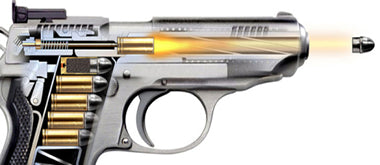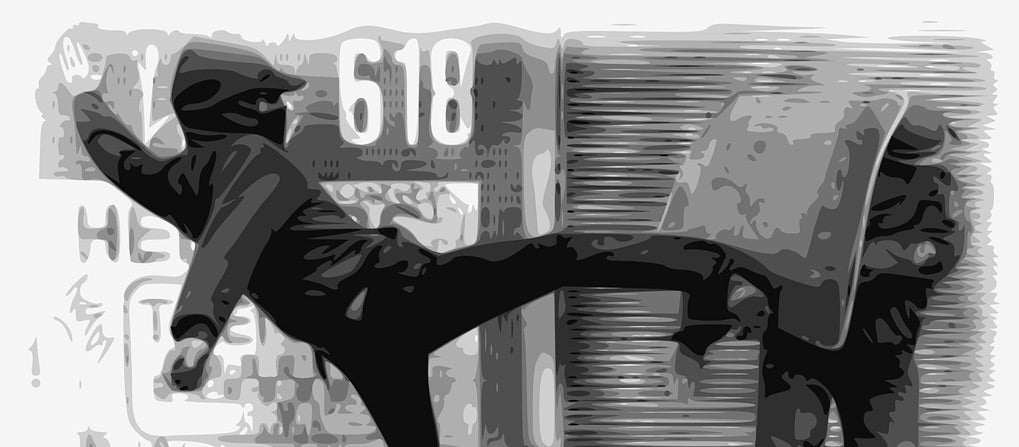
Internal Ballistics Part 1 – Cycle of Operation and Firearm Function

Welcome back! Thank you for your interest in ballistics: the science of shooting. In this three part series, I will cover internal ballistics and the combination of actions and reactions within the firearm that influence a projectile’s movement through the end of the barrel and ultimately affect a bullet’s flight to target.
Since there is so much information to cover regarding internal ballistics, I will lay the foundation for the next two articles by discussing the cycle of operation and firearm function. This will serve as both a reference and a guide for understanding the mechanical properties of the firearm and the physical properties of ammunition in the next articles.
Many shooters take for granted that using a firearm simply involves loading the ammunition, deactivating the safety (if there is one), aiming, and pressing the trigger. However, I believe understanding the cycle of operation provides the deeper knowledge required to enhance shooting skill, identify and prevent firearm failures, and study internal ballistics.
Cycle of Operations:
 Although there are many different types of firearms, every one of them has a cycle of operation. With minor exceptions, the following eight steps are inherent to every firearm.
Although there are many different types of firearms, every one of them has a cycle of operation. With minor exceptions, the following eight steps are inherent to every firearm.
- Feeding: A cartridge is stripped from a magazine (semi-automatics, lever and bolt-action rifles) or manually placed (single-shot bolt-action rifles, break-open shotguns, and revolvers) against a bolt or breech face.
- Chambering: The cartridge, held in place by the extractor, is pushed into the barrel chamber by the bolt (rifles, semi-auto shotguns) or breech face (semi-auto pistols, lever-action rifles, break-open shotguns). Revolver ammunition is rotated into place by the movement of the cylinder.
- Locking: The bolt/breech face/cylinder is locked into position with the bore/barrel. Through locking, the mechanical alignment of the major parts within the firearm will ensure gas expansion is captured and focused on propelling the bullet through the bore and ensuring the operation of a semi-auto firearm. Once locked, the weapon is ready to fire.
- Firing: A trigger press rotates the sear, which sends the firing pin or striker against the primer, causing ignition of the powder. This results in gas expansion within the chambered cartridge which propels the projectile into and through the barrel bore.
- Unlocking: In semi-automatic weapons, the gas expansion causes a backward movement of the bolt (rifles/shotguns) or slide/breech face (pistols) unseating the cartridge case from the chamber and engaging the disconnector (which prevents fully automatic fire). In bolt and lever action rifles, pump and break-open shotguns, and revolvers, the shooter manually performs the unlocking.
- Extraction: Continued backward movement of the bolt or slide/breech face in semi-automatic weapons causes the extractor to “pull” the cartridge case out of the chamber. Again, the shooter manually performs this action in other types of guns.
- Ejection: Prior to the termination of backward movement of the bolt or slide/breech face, the cartridge case being pulled by the extractor comes in contact with the ejector which “pushes” the spent cartridge case through the ejection port.
- Cocking: During the backward movement of the bolt or slide/breech face while extraction/ejection is taking place, the hammer or striker is engaged by the sear and cocked for the resumption of the cycle of operations. The shooter manually performs this action in other types of weapons. Note: In double action and double action/single action guns, cocking and firing are incorporated into the action of the trigger pull.
YouTube has many videos that use animation to illustrate the cycle of operation for different types of firearms. Click the links below to view the cycle of operation that most closely resembles your firearm.
Firearm Function
On the firing range, in gun shops, and in gun magazines, abbreviations such as DAO, SAO, and DA/SA are typically coupled with solicited or unsolicited advice as to which is the “best,” the “safest,” or the “most tactical.” Similar to other features such as barrel length, magazine capacity, and sight construction, there is an “action” that suits an individual shooter’s needs.
In general, the word that precedes “action” describes how many movements the hammer/striker makes with each trigger press. There are slight variations that I will cover below, but in a “single action” firearm, each trigger press causes the hammer/striker to immediately move in one direction. Conversely, in a “double action” firearm, each trigger press cocks the hammer/striker and then releases it forward – thus two directions.
Single Action – (Also termed “single action only” – SAO) Through the cycle of operation, the hammer or striker is cocked and the cartridge is fed, chambered, and the firearm is locked and ready to be fired. With the safety disengaged (if present), pressing the trigger disengages the sear and the hammer or striker is released in one movement forward. In a hammer-fired weapon, the hammer strikes the firing pin and sends it forward into the primer. In striker-fired weapons, the sear disengagement sends the striker directly into the primer. On revolvers, the firing pin is attached to the hammer and the hammer’s forward movement sends the firing pin into the primer. The cycle of operation following each shot fired cocks the hammer for the next shot for semi-automatic pistols. Single action revolvers require the shooter to manually cock the hammer for each shot. Single action firearms tend to require considerably less trigger pressure and travel than other firearms. Single action trigger pressure typically ranges from 2 to 4.5 pounds. This makes them ideal for competition or well-trained concealed weapon carriers.
The most common single action pistols are 1911 style. Other types include certain Sig Sauer models such as the P226 X-5, 238, and 938; the Browning Hi-Power; the Springfield XD series (striker fired); and many revolvers. Nearly all shotguns and civilian (non-Class III) rifles are considered single action.
A “ready” single action gun is considered “cocked and locked” which means a round is in the chamber and the hammer/striker is held to the rear under spring tension. Some shooters believe it is alright to manually lower a hammer on a loaded single action semi-auto in a controlled manner using their thumb without firing it in order to carry it “safely.” Aegis Academy strongly discourages this procedure and believes true safety is a conscious action on the part of the shooter. Therefore a “cocked and locked” single action firearm is safe for as long as the shooter himself or herself is trained, responsible, and safe.
Double Action – (also termed “double action only” – DAO) This type of firearm differs slightly from single action firearms. The cycle of operation does not cock the hammer/striker in a double action firearm. When the cycle of operation is complete and a cartridge is fed, chambered, and locked, the hammer/striker remains down or forward. The hammer/striker is then cocked only in conjunction with each trigger pull, thus the hammer/striker moves rearward until the sear disengages and then is sent forward to strike the firing pin or the primer. Double Action firearms tend to require long and heavy trigger presses. Double Action trigger pressure typically ranges from 5 to 9 pounds. They are, however, consistent and every trigger press is exactly the same.
Double Action/Single Action (DA/SA) – Reaching the market for shooters who want the best of both worlds, DA/SA firearms fit the bill. The cycle of operation, through the initial loading or through subsequent firing, cocks the hammer and the gun can be fired in single action mode. However, these firearms are designed with a “decocker.” When engaged, the “decocker” obstructs or locks the firing pin as it mechanically lowers the hammer in a controlled manner. Thus transitioning the firearm into double action mode.
This gives the shooter the option to choose which mode he or she wants to carry or operate the pistol. For example, the act of loading the DA/SA pistol places it in Single Action mode with the hammer cocked and ready to go. If the shooter chooses DA mode, he or she simply engages the decocker and the hammer is lowered in a safe and controlled manner. The shooter’s first shot will require a long and heavy trigger press. Upon firing, the cycle of operation will then extract, eject, cock, feed, chamber, and lock. Leaving the gun in SA mode where the next shot will require only a shorter and lighter trigger press. The abrupt transition from long heavy (5-9lb) double action trigger press to short light (2-4.5lb) single action trigger press can be difficult to master for novice shooters. As with any firearm, however, instruction, training, and dedication can build familiarity and consistency.
The most common DA/SA pistols are the majority of the Sig Sauer, CZ, H&K, and Beretta lines.
In conclusion, there is a gun made for virtually every style of shooting to suit the needs of just about every shooter. Every firearm has a cycle of operation. Regardless of the type of action, education (like reading this article), training, and proficiency are the keys to safe and effective employment of firearms.
Now that we’ve laid the groundwork, we will move on to a deeper study of internal ballistics in next month’s article. Until then, stay safe, practice, and shoot straight!
~ Howard Hall
Leave a comment
Comments will be approved before showing up.
Also in Staff Articles

Home Defense - What you can do...

Gun Review: Sig Sauer P938


Howard Hall
Author